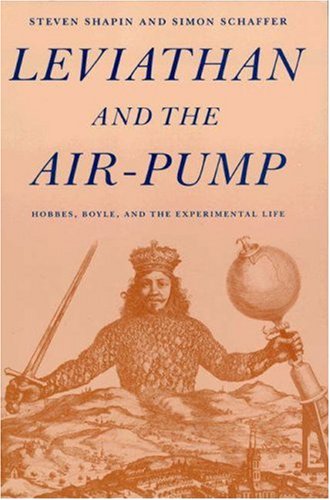Pamela H. Smith: The Body of the Artisan: Art and Experience in the Scientific Revolution (2004)
Filed under book | Tags: · alchemy, art, art history, craft, epistemology, history of science, knowledge, natural philosophy, painting, renaissance, science, scientific revolution, technique

“Since the time of Aristotle, the making of knowledge and the making of objects have generally been considered separate enterprises. Yet during the late sixteenth and early seventeenth centuries, the two became linked through a “new” philosophy known as science. In The Body of the Artisan, Pamela H. Smith demonstrates how much early modern science owed to an unlikely source-artists and artisans.
From goldsmiths to locksmiths and from carpenters to painters, artists and artisans were much sought after by the new scientists for their intimate, hands-on knowledge of natural materials and the ability to manipulate them. Drawing on a fascinating array of new evidence from northern Europe including artisans’ objects and their writings, Smith shows how artisans saw all knowledge as rooted in matter and nature. With nearly two hundred images, The Body of the Artisan provides astonishingly vivid examples of this Renaissance synergy among art, craft, and science, and recovers a forgotten episode of the Scientific Revolution-an episode that forever altered the way we see the natural world.”
Publisher University of Chicago Press, 2004
ISBN 0226763994, 9780226763996
x+367 pages
Reviews: Ashley D. West (CAA Reviews, 2004), Marjorie Harth (Pomona, 2004), Eileen Reeves (Renaissance Quarterly, 2005), William Eamon (Isis, 2006), John Henry (British Journal for the History of Science, 2006), Jonathan Sheehan (American Historical Review, 2006), Klaas van Berkel (BMGN, 2006), Trevor Marchand (Senses and Society Journal, 2008).
PDF (51 MB, updated on 2020-5-1)
Comments (2)Steven Shapin: The Scientific Revolution (1996)
Filed under book | Tags: · 1600s, history of science, knowledge production, natural philosophy, science, scientific revolution

“‘There was no such thing as the Scientific Revolution, and this is a book about it.’ With this provocative and apparently paradoxical claim, Steven Shapin begins his bold vibrant exploration of the origins of the modern scientific worldview.”
Publisher University of Chicago Press, 1996
Science.Culture series
ISBN 0226750205, 0226750213
xiv+218 pages
Reviews: Joseph E. Bauer (H-Net), Margaret J. Osler (Configurations), A.S. Weber (16th Century Journal), D. Bertoloni Meli (Early Science and Medicine), Robert Ward (Soundings).
PDF (updated on 2013-6-24, via Marcell Mars)
Comments (2)Steven Shapin, Simon Schaffer: Leviathan and the Air-Pump: Hobbes, Boyle, and the Experimental Life (1985)
Filed under book | Tags: · air, epistemology, experiment, history of science, knowledge, metaphysics, natural philosophy, philosophy, physics, pneumatics, science

“In the aftermath of the English Civil War, as people were groping for new forms of political order, Robert Boyle built an air-pump to do experiments. Does the story of Roundheads and Restoration have something to do with the origins of experimental science? Schaffer and Shapin believed it does.
Focusing on the debates between Boyle and his archcritic Thomas Hobbes over the air-pump, the authors proposed that ‘solutions to the problem of knowledge are solutions to the problem of social order.’ Both Boyle and Hobbes were looking for ways of establishing knowledge that did not decay into ad hominem attacks and political division. Boyle proposed the experiment as cure. He argued that facts should be manufactured by machines like the air-pump so that gentlemen could witness the experiments and produce knowledge that everyone agreed on. Hobbes, by contrast, looked for natural law and viewed experiments as the artificial, unreliable products of an exclusive guild.
The new approaches taken in Leviathan and the Air-Pump have been enormously influential on historical studies of science. Shapin and Schaffer found a moment of scientific revolution and showed how key scientific givens–facts, interpretations, experiment, truth–were fundamental to a new political order. Shapin and Schaffer were also innovative in their ethnographic approach. Attempting to understand the work habits, rituals, and social structures of a remote, unfamiliar group, they argued that politics were tied up in what scientists did, rather than what they said.”
Including a Translation of Thomas Hobbes’ Dialogus Physicus de Natura Aeris by Simon Schaffer
Publisher Princeton University Press, 1985
ISBN 0691083932, 9780691083933
xiv+440 pages
Reviews: Richard C. Jennings (British Journal for Philosophy of Science), Anna Marie Roos (H-Ideas), Richard Tuck (London Review of Books), J.L. Heilbron (Medical History), Katherine Pandora (UCLA Historical Journal), Aloysius Martinich (Journal of the History of Philosophy), Bruno Latour (Studies in the History and Philosophy of Science), P.B. Wood (History of Science), David Oldroyd (Social Epistemology, reply by William Lynch, reply by Oldroyd), Robert Kargon (Albion), I. Bernard Cohen (American Historical Review), Lawrence Busch (Science & Technology Studies), Mordechai Feingold (English Historical Review), Margaret C. Jacob (Isis), Owen Hannaway (Technology and Culture), Ian Hacking (British Journal for the History of Sciences), James G. Traynham (Journal of Interdisciplinary History), Richard S. Westfall (Philosophy of Science).
PDF
See also Introduction to 2011 edition.

